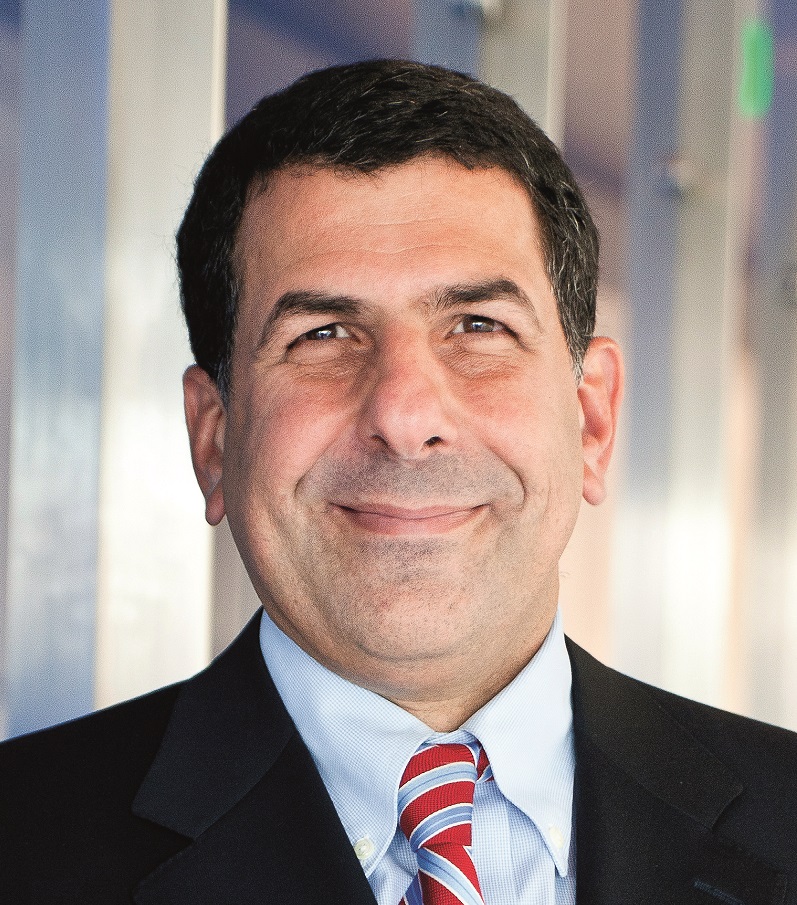Michael Zelouf, Business Director for the EMEA region at Western Asset, Legg Mason‘s global fixed income subsidiary, believes one must separate the US debt market outlook from the one for the debt market in general. In an exclusive interview with Funds Society, he explains that in the US, the uncertainty surrounding Donald Trump’s economic policies could increase market volatility, but the truth is that, after the December rate hike, “the market has already largely factored in the likelihood that the Fed will adopt a more aggressive stance this year.”
In this regard, Zelouf says: “Markets move very fast and, as fixed-income investors, we must rely on the slope of the forward rates curve to determine whether yields are going to go up or down. In the short end of the curve, everything depends on the Fed, and we cannot forecast it, so we will not take too much risk in this segment because the Fed could adopt a more aggressive stance. “
The normalization of the rate curve is, therefore, the most probable scenario and the one most expected by the expert. “If the Fed, at this late stage of the cycle in which rates are usually rising, is normalizing its monetary policy – and we believe it is doing so – the 10 to 30 year rate curve should normalize . We firmly believe that, in relative terms, returns at 10 to 30 years will be reduced,” says Zelouf.
Another issue, he points out, is whatever happens in Germany and Japan with the Bank of Japan’s objective of keeping the ten-year bond yield at 0, and in Germany below 0.5%. In his opinion, “this is a strong attraction for Japanese and German investors, who opt for the US bond. It makes a lot of sense, and not because US long-term debt is better, but rather for the relative value it offers over Japanese and German debt. “
Corporate bonds: telecommunications and the US financial sector
Regarding corporate bonds, Zelouf points out the telecommunications, energy, and financial sectors which could register 2% differentials against US public debt. “We have companies like Verizon, which in addition to being global has a dominant position in the US market and has a quarterly turnover of $ 4 billion,” he explains.
As a specialist in the Legg Mason Western Asset Macro Opportunities Bond Fund, it’s in the US financial sector where he sees the greatest potential, with long-term credit growth and interest rate outlooks that will increase its profits. “The combination of these two aspects implies that the return on assets will be positive.” In European banking, its exposure focuses on the big names: Bank of Scotland, HSBC, Credit Suisse, Standard Chartered…, with reduced exposure to the Spanish banks BBVA and Santander.
Zelouf believes that, currently, cyclical companies’ credit has reasonable appeal, and points out other names such as Exxon Mobile or AB InBev. “We invest in companies with a long-term strategy, organic growth, an adequate degree of leverage and where we know the management well and this is going in the right direction.” The main sector that they avoid in USA is that of health, since “it is difficult to know what will happen with Obama Care, and there is uncertainty regarding its income…”
Regarding high yield, he reveals that one of the peculiarities of the current credit cycle is its long duration, which facilitates refinancing of debt. “Currently, 63% of the debt in the high yield market will not be refinanced before 2019, they will do so between that year and 2021,” he points out. A circumstance to which we must add the economic growth of the last few years; which has been sufficient to generate income to cover the debt and interests of this type of companies.
In our opinion, in the second quarter of this year, we’ll see a rebound in defaults, which are starting to remit gradually. Therefore, we believe that the overall level of defaults in the high-yield segment, including energy stocks, which represent about 15% of the universe, began to decline thanks to the recovery of oil prices and the fact that many oil companies have not incurred in default since they have been able to refinance their lines of credit, etc., which means that the risk of default is beginning to dissipate. It has not disappeared altogether, but it is beginning to shrink.”
In any case, Zelouf admits that his exposure to the energy and commodities sector was relatively low in high yield, at 1.5%, and is mainly concentrated in companies with investment grade.
Selective in emerging markets
In emerging markets, the main criteria used to identify assets are “reasonable valuations” and the search for short-term debt in dollars. “We also look at the strength of the institutions of each country. That’s why we did not invest in Venezuela and that’s why we did invest in Argentina after its change of government.” From a tactical point of view, there are two factors they watch out for: interest rates and oil and commodity prices.
The first presents a negative scenario for those countries with a high level of debt in dollars. The second is positive for some and negative for others. Following OPEC’s announcement of a cut in production and an oil price forecast of $ 60 / barrel, Zelouf said that importing countries such as South Africa, Turkey or India would not benefit from this, which would require them to be very selective. “We are positive in some and negative in others.” Finally, structural reforms must also be taken into account in the long term, which is why they are committed to Mexico and India, which are countries that have implemented positive structural reforms. “In emerging markets you have to be selective, you have to talk to politicians, even if they sometimes they also make mistakes.”



 For Fórmate a Fondo
For Fórmate a Fondo